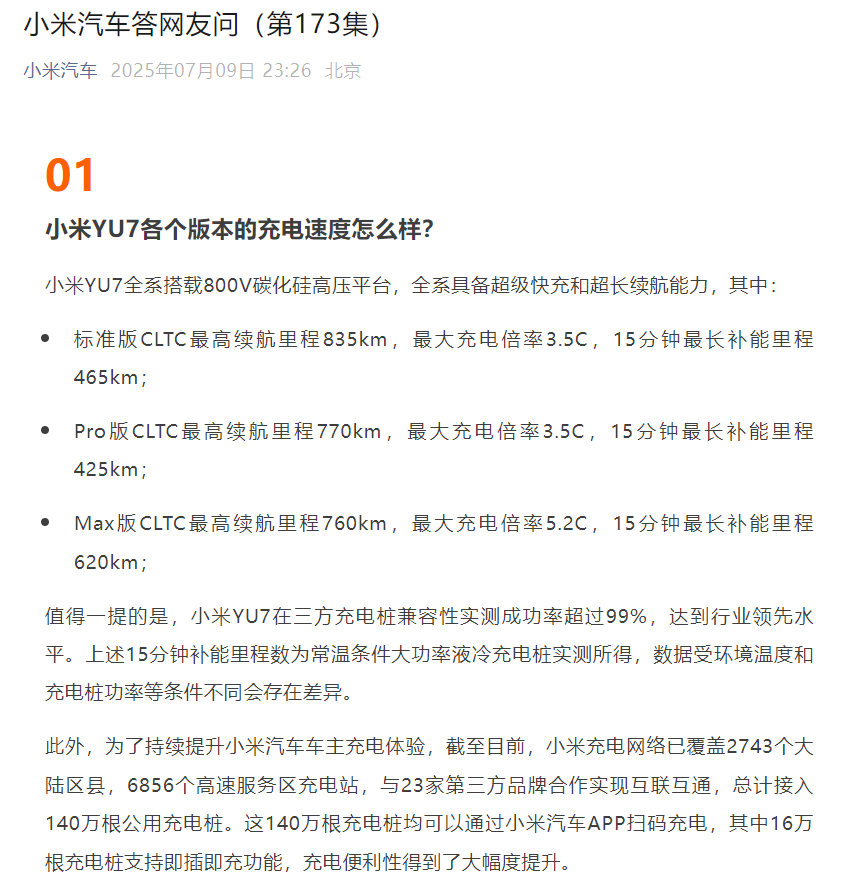On the evening of July 9, Xiaomi Auto announced a partnership with 23 third-party brands to improve the charging experience for its vehicle owners, connecting a total of 1.4 million public charging piles. All these charging piles can be accessed via the Xiaomi Auto app's QR code scanning feature, with 160,000 of them supporting plug-and-charge functionality, significantly enhancing charging convenience. Currently, Xiaomi's charging network covers 2,743 counties in mainland China and 6,856 charging stations at highway service areas. Furthermore, Xiaomi Auto reported that the compatibility success rate of its YU7 model with third-party charging piles exceeds 99%, reaching an industry-leading level. Earlier, on April 28 this year, Xiaomi Auto announced the ongoing expansion of its charging network, having already partnered with 18 quality operators in the industry, with over 1.26 million charging piles integrated into the Xiaomi charging map, covering 2,691 counties in mainland China. This includes 94,000 supercharging piles and 970,000 DC fast charging piles, along with 6,221 service area charging stations. Besides partnerships with operators, in December 2024, Xiaomi Auto will also collaborate with NIO, XPeng, and Li Auto to enhance the charging network. This collaboration will integrate over 14,000 NIO charging piles, more than 9,000 XPeng charging piles, and over 6,000 Li Auto charging piles into the Xiaomi charging map, allowing real-time data viewing. However, the terms of use slightly differ among the three brands, as only some Li Auto charging piles support QR code charging through the Xiaomi app, while XPeng charging piles offer plug-and-charge services. Regarding its self-built charging network, Xiaomi Auto has plans but has not pushed for widespread deployment yet. In March 2024, Xiaomi founder, chairman, and CEO Lei Jun announced at a press conference that Xiaomi Auto is developing its own supercharging network, gradually advancing in cities like Beijing, Shanghai, and Hangzhou, using a 600kW liquid-cooled supercharging solution. However, in August of the same year, Lei Jun revealed that although Xiaomi has established some charging stations, there are currently no plans for large-scale construction. The number of public charging piles in the country is already sufficient, and Xiaomi has tested 70,000 public charging piles, addressing hundreds of issues. He pointed out that Xiaomi's current primary task is to focus on car manufacturing, committed to making the Xiaomi SU7 the most compatible and convenient electric vehicle with public charging piles. In addition to public charging piles, Xiaomi has also launched home charging piles, claiming "one-button cover opening, plug-and-charge," and supports OTA upgrades.
Xiaomi Partners with 23 Brands to Enhance EV Charging Experience

Share this post on: